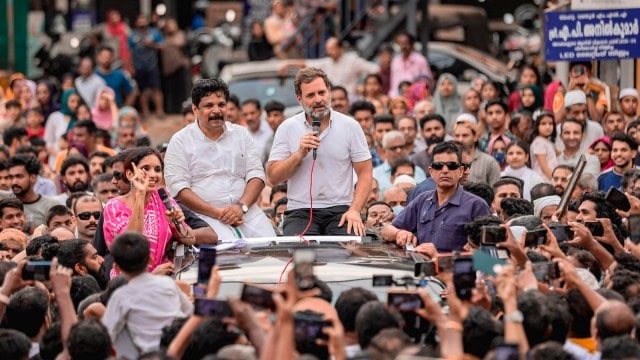
I cannot predict the winner or the margin of victory on counting day in June. I have invariably been wrong, except in 2014, when I was sure the Congress-led UPA would be resoundingly defeated. In 2019, based on media assessments, I had thought it would be an even fight. In 1977, I bet Rs 1,000 with my father on the election outcome. It was inconceivable to me, living in the deep South, that Indira Gandhi would lose. Hence, I am not a Grand Prophet of electoral outcomes as the mainstream media regards Prashant Kishore. I can only talk of strategies the leading contenders seem to have adopted.
Let us begin with the top seed, undoubtedly the NDA, led by Prime Minister Narendra Modi. More than ever before, Modi is NDA and the NDA is Modi. A sine qua non for being in the NDA and even in the higher bureaucracy is total subservience to Modi. Every minister prefaces every statement with obeisance. Every government activity, including normal functions, is attributed to his wisdom and energy. Modi claims credit not only for what his government has done but also for the achievements of past governments. Central schools, which have been around for a long time, are now called PM Sri Kendriya Vidyalaya. Every ration shop, every petrol bunk has become a celebration of Modi. Even the RSS, has been quietly sidelined.
This is bolstered by a colossal publicity campaign. Money flowed from the Centre and states in the G20 carnival, which, over the year, assumed the form of a great Indian festival.
This was accompanied by the capture of mainstream media by corporates. Those who remain relatively independent talk of Adani and Ambani as the main perpetrators, but the fact is that no corporate can deny the ruling party. A comparison of relative investment in Gujarat before and during the Modi regime will establish this helplessness. The corporates were duly rewarded with a reduction in corporate tax rates. The decline in Chinese production and growth rates, the developing global economic depression, and the fall of multilateral trade rules contributed to India’s economic strength. With phenomenal growth in infrastructure and rapid development of information technology, India is indubitably in a happy place, even though rising inequalities, inflation, unemployment, decline of startups, and much higher consumer credit pose future threats to the demand side. Much of what has been done by the Centre has been at the cost of the states, particularly those that are not “double engine”, and Centre-state conflict is growing.
Hounding the Opposition is another element of the electoral strategy. The CBI, ED and the NIA focus more on the opposition than on ruling parties and a person in the lens of any of these organisations can escape legal action if they switch parties. The recent electoral bonds case and remarks by some judges, including the Chief Justice of India, seem to give the impression that, at least for now, they are showing signs of recovering the independence given to them by the Constitution. How long this will last after the election could depend on the composition of the next Lok Sabha.
What, then, of the Opposition? A few months ago, the formation of the INDI alliance gave the impression that it could damage the ruling front. With Nitish Kumar at the helm, the coalition looked like it would seriously try to win back lost space. Nitish speaks Hindi and has vast experience as Chief Minister. He might have been a credible challenger to Modi. But it looked as though the Grand Old Party would have none of it. Having won Karnataka, primarily because of solid anti-incumbency and the efforts of local leaders, it got the mistaken impression that the wind had changed direction. The alliance hibernated for about half a year, Nitish switched sides, Mamata Banerjee decided to go it alone, the alliance could not work on a joint minimum programme, inner party democracy was not restored in the Congress, and a stream of disgruntled leaders left the Opposition parties, particularly from the only substantial national party in their midst.
Yet the situation is not entirely hopeless. If they have not succeeded in uniting, at least there are many constituencies in which they have made electoral adjustments. Maharashtra, Bihar and Bengal could prove to be decisive battlefields. The southern states could be a bridge too far for the ruling parties, even though the Modi effect could prove vital in Karnataka, Telangana and Andhra. Arvind Kejriwal’s arrest and the effort to demolish the AAP brought the alliance partners together, but for how long, we do not know.
Overall, the Modi image overshadows the electoral campaign. Yet democracy and the Constitution need a strong opposition. As Modi himself said at a function in Paraunkh, the ancestral village of former President Ram Nath Kovind, “I want a strong opposition in the country; I am not against anyone.”
The writer is the former Cabinet Secretary, Government of India


